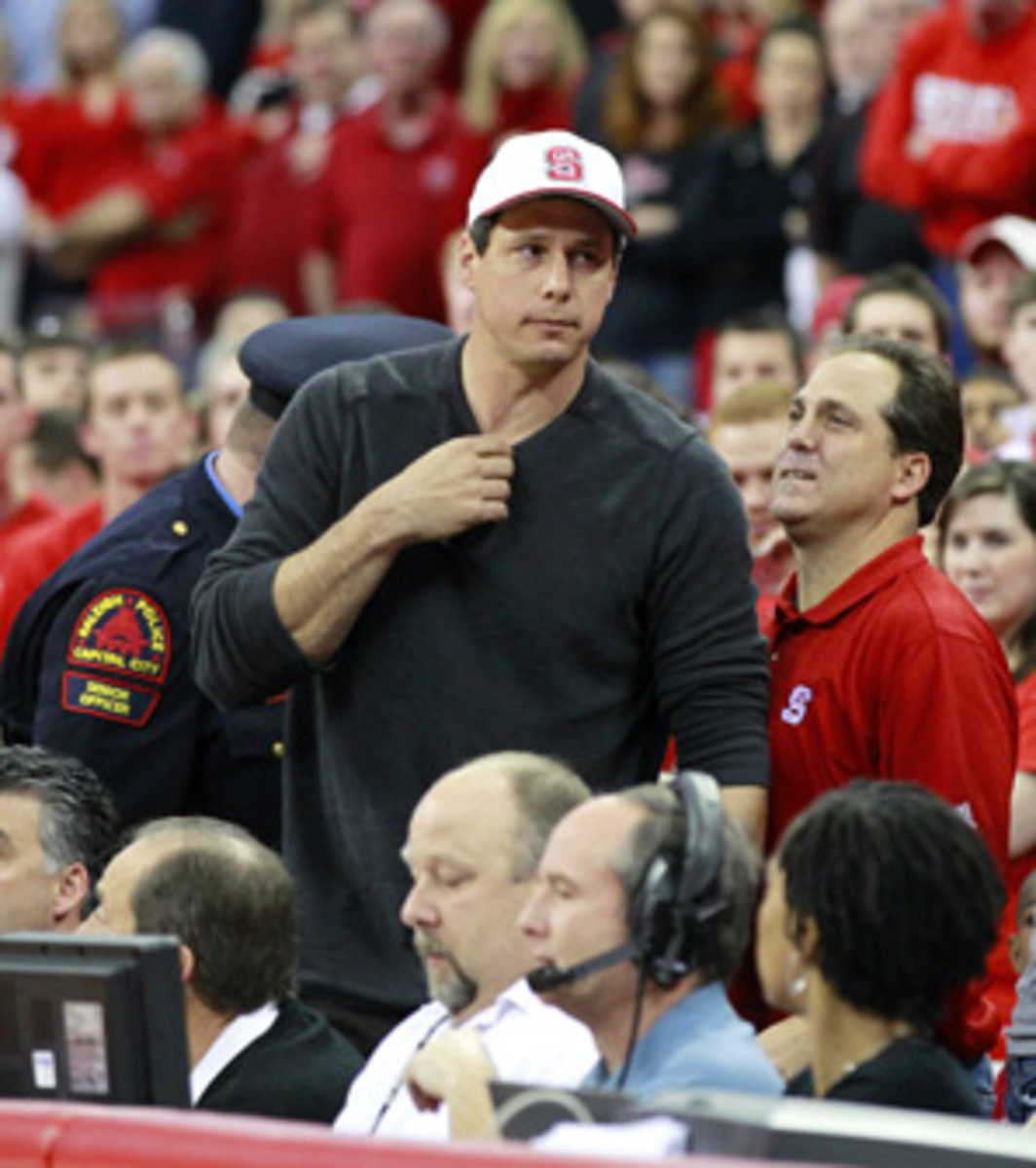Some simple heckling etiquette
When former North Carolina State stars Chris Corchiani and Tom Gugliotta were ejected from their alma mater's basketball game last Saturday for verbally abusing referee Karl Hess, the pair joined Muppet Show ticketholders Statler & Waldorf and the cartoon crows Heckle & Jeckle on a short but illustrious list of heckling tag teams.
And while it isn't clear precisely what Corchiani & Googs said to the ref, one can hope it was something appropriately vaudevillian, in the best tradition of these pairs, like the classic: "Hey, Hess, can you sing tenor? As in 10 or 11 miles from here?"
It was in the age of vaudeville, in the 1920s, that sport's most notorious heckling duo did its double act in Philadelphia. These were the Kessler Brothers, Bull and Eddie, one of whom sat on the third base line at Shibe Park, the other of whom sat on the first base line, from which positions they shouted to each other conversationally about the inadequacies of the hometown A's.
And the A's -- as with any offensive vaudeville act -- tried to give them the hook. In the same way that a Raleigh policeman had to ask Corchiani & Googs to leave the RBC Center -- reluctantly, in the manner of an airline passenger telling someone, "I'm terribly sorry, but that's my middle seat" -- police were also forced to intervene with the worst of the heckling acts in Philadelphia, the nation's First City of Heckling.
On September 16, 1927, A's owner-manager Connie Mack testified in a Philadelphia court against one of his own fans: 26-year-old Harry Donnelly, who was being held on $500 bail for disturbing the peace at Shibe Park. It was Donnelly's sustained and systematic heckling, Mack said, that had driven A's Sammy Hale and Zack Wheat to psychological torment -- and driven A's outfielder Bill Lamar out of the big leagues entirely that season. Donnelly claimed he was a supportive fan, to whom various A's had given baseballs as gifts. Mack said those players were "trying to buy his favor," in the vain hope of escaping his wrath.
"Donnelly, according to Mr. Mack, through the medium of a vocal roar, has done more to ruin the morale of the Athletics than any other factor, including the bats of Babe Ruth and Buster Gehrig," reported The New York Times' correspondent, who alas could give no more detail on what Donnelly said -- though we can assume this is the heckler who put the pro in profanity, and also the fan.
Last Saturday, meanwhile, Corchiani stressed that he and Gugliotta kept their heckling clean and relatively innocuous, hewing closely to the universally acceptable line of ref-baiting, calling attention to the zebra's comprehensive incompetence, for instance, and possibly his need to avail himself of the nearest Lenscrafters.
On ESPN, former ACC player Jay Bilas wondered why a pair of high-profile former players would want to heckle an official at all, rather than ridiculing him privately between themselves. And I agree with Bilas. For starters, private mockery is more satisfying than public mockery. It is also -- in this age of Internet trolling and cable-TV roasts, when every insult seeks the largest possible audience -- a dying art.
Setting that aside, there is also the question of who should be allowed to heckle, and how? Mercifully, yet another Philadelphia loudmouth of the 1940s and '50s -- 275-pound heckler Pete Adelis, "The Iron Lung of Shibe Park" -- codified the etiquette of rudeness, publishing his "Rules of Scientific Heckling" in The Sporting News in the middle of the last century. They included: "No profanity," "Nothing purely personal," "Take it as well as give it," and "Give the old-timer a chance -- he was a rookie once."
This is a chivalric guide for hecklers, embracing empathy, gallantry and self-deprecation. Corchiani & Googs, by all accounts, adhered to the first two rules. (And the rabbit-eared Hess was reprimanded by the ACC, though only for a procedural point: He asked a cop directly to eject the hecklers, rather than using a North Carolina State official as a go-between.)
Still, this heckler's code doesn't go far enough. There ought to be several more laws, among them:
1. Be funny or be seated. (Better still, be funny and be seated, especially if you're seated in front of me.)
2. Sing your insults, whenever possible, preferably in unison with several thousand others.
3. Aspire to combine numbers (1) and (2) above, as when English soccer fans sang their ode to the inexact striking ability of Bobby Zamora (to "That's Amore"): "When the ball hits your head/And you're sat in Row Zed/That's Zamora ..."
4. If you played for one of the two teams in question, or are well-known from some other endeavor, confine your devastating one-liner to your seatmate. Share it with the world at large and you may suffer the fate of Corchiani & Googs, doing a perp walk that looked more like a Terp walk, given the tortoise pace of their egress, and their status as ACC school mascots, dressed in team cap and golf shirt.
It was unwanted attention, to be sure, but a good reminder to hecklers and the refs who run them: Unwanted attention may result when calling attention to yourself.






